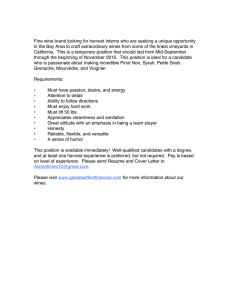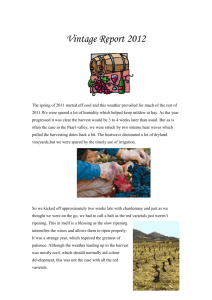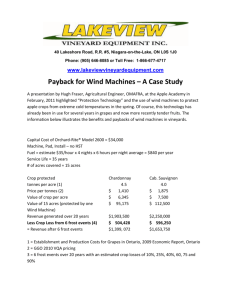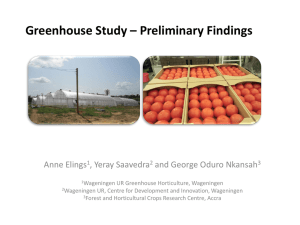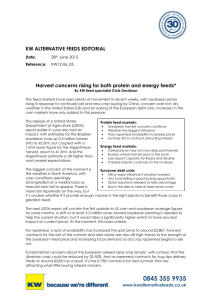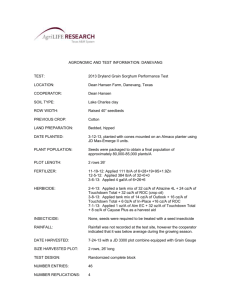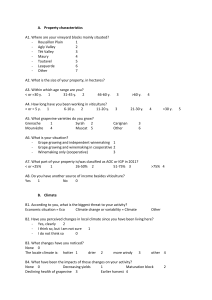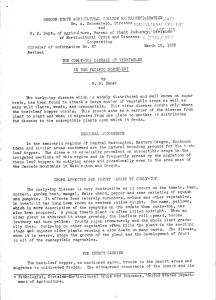Southern California - The Wine Institute
advertisement
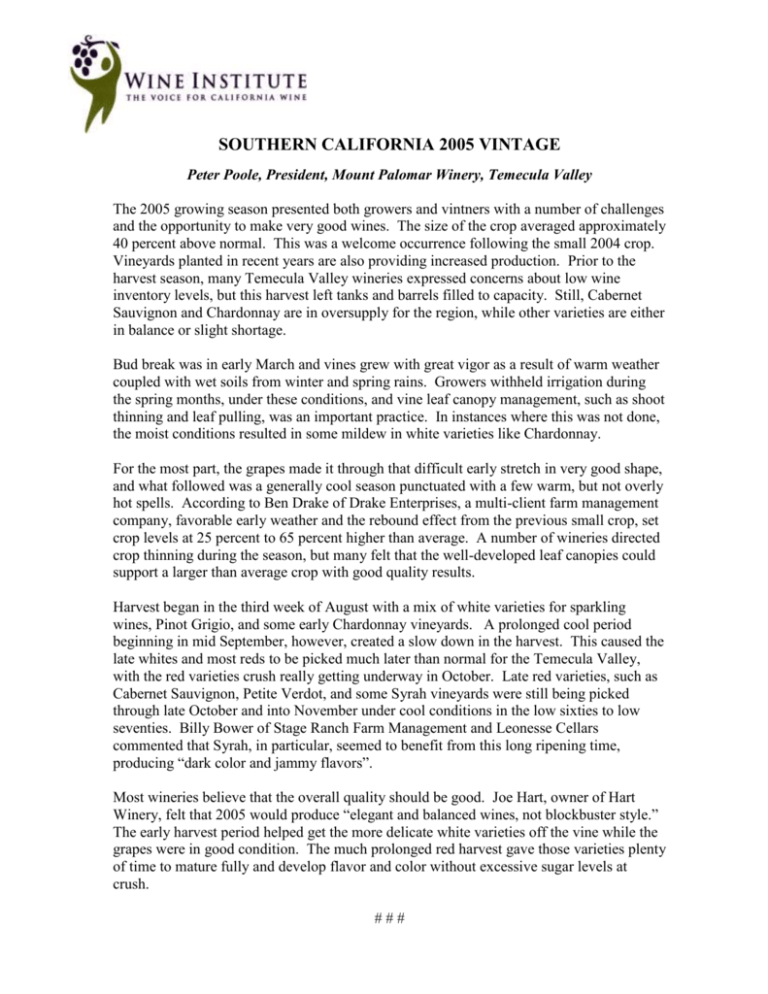
SOUTHERN CALIFORNIA 2005 VINTAGE Peter Poole, President, Mount Palomar Winery, Temecula Valley The 2005 growing season presented both growers and vintners with a number of challenges and the opportunity to make very good wines. The size of the crop averaged approximately 40 percent above normal. This was a welcome occurrence following the small 2004 crop. Vineyards planted in recent years are also providing increased production. Prior to the harvest season, many Temecula Valley wineries expressed concerns about low wine inventory levels, but this harvest left tanks and barrels filled to capacity. Still, Cabernet Sauvignon and Chardonnay are in oversupply for the region, while other varieties are either in balance or slight shortage. Bud break was in early March and vines grew with great vigor as a result of warm weather coupled with wet soils from winter and spring rains. Growers withheld irrigation during the spring months, under these conditions, and vine leaf canopy management, such as shoot thinning and leaf pulling, was an important practice. In instances where this was not done, the moist conditions resulted in some mildew in white varieties like Chardonnay. For the most part, the grapes made it through that difficult early stretch in very good shape, and what followed was a generally cool season punctuated with a few warm, but not overly hot spells. According to Ben Drake of Drake Enterprises, a multi-client farm management company, favorable early weather and the rebound effect from the previous small crop, set crop levels at 25 percent to 65 percent higher than average. A number of wineries directed crop thinning during the season, but many felt that the well-developed leaf canopies could support a larger than average crop with good quality results. Harvest began in the third week of August with a mix of white varieties for sparkling wines, Pinot Grigio, and some early Chardonnay vineyards. A prolonged cool period beginning in mid September, however, created a slow down in the harvest. This caused the late whites and most reds to be picked much later than normal for the Temecula Valley, with the red varieties crush really getting underway in October. Late red varieties, such as Cabernet Sauvignon, Petite Verdot, and some Syrah vineyards were still being picked through late October and into November under cool conditions in the low sixties to low seventies. Billy Bower of Stage Ranch Farm Management and Leonesse Cellars commented that Syrah, in particular, seemed to benefit from this long ripening time, producing “dark color and jammy flavors”. Most wineries believe that the overall quality should be good. Joe Hart, owner of Hart Winery, felt that 2005 would produce “elegant and balanced wines, not blockbuster style.” The early harvest period helped get the more delicate white varieties off the vine while the grapes were in good condition. The much prolonged red harvest gave those varieties plenty of time to mature fully and develop flavor and color without excessive sugar levels at crush. ###
